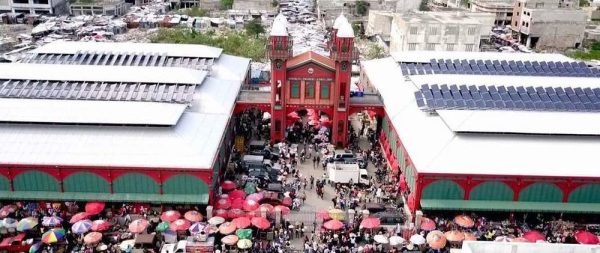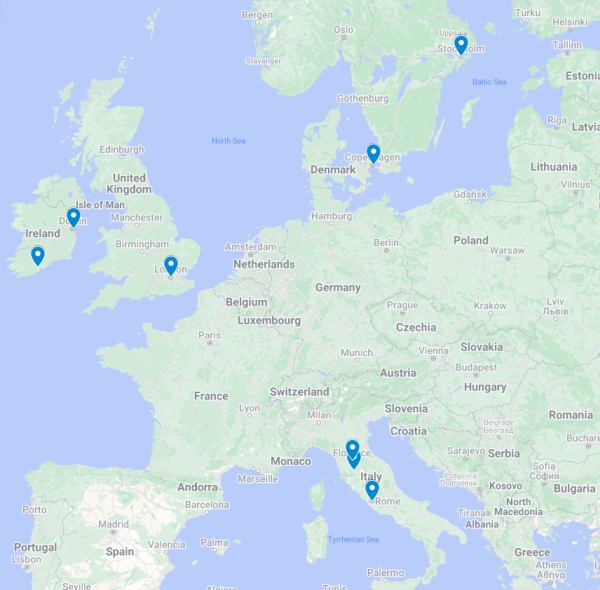Ensemble explores Middle Eastern mysticism
Yuvon Ron Ensemble combines music, stories and dance styles
Allegheny students and community members gathered in Shafer Auditorium on Saturday, Nov. 5, to watch a musical and dance performance by the Yuval Ron Ensemble. The ensemble’s theme was “The Mystical Music of the Middle East.”
The ensemble approached Allegheny’s Year of Mindfulness theme through alleviating national, racial, religious and cultural divides by uniting the music and dance of the people of the Middle East into a unique, spiritual and inspiring musical celebration.
“When the college decided to do the Year of Mindfulness, they encouraged us to do more than just lectures and to bring different art forms as well,” said Jane Ellen Nickell, college chaplain and Year of Mindfulness committee member. “So I thought about this group, and when I looked at their website, I saw this program that brings together Judaism, Islam and Eastern Christianity through music and dance.”
The ensemble was founded in 1999 and is led by Yuval Ron, a composer, producer and musician. The ensemble includes Arabic, Jewish and Christian artists who work to intersect the sacred musical traditions of Judaism, Sufism and the Christian Armenian Church.
The group’s members are Elinor Sitrish on vocals; Sukhawat Ali Khan on Qawwali vocals and harmonium; Norik Manoukian on the duduk, an Armenian woodwind instrument, and other woodwinds; Verginie Alumyan on the kanoun, and Middle Eastern lap zither or harp; and Jamie Papish on percussion. The ensemble’s performance included a visual component with devotional dancer Maya Gabay.
The group also held musical and dance workshops with the music department throughout Friday and Saturday. The workshop was called “Workshop with Yuval Ron: Healing and Transforming Consciousness Through Sacred Sound, Music and Dance.”
“I went to the music seminar. They explained to us the different modes and modality in which music can be written in. … In the east, they focus on the emotion and the earthy sound,” said Elsie Hendricks, ’18. “I also went to the dance workshop on Saturday. … I loved it. I felt really relaxed afterwards. It really helped everyone to focus on the present, and that was what it was about—getting your body to relax and be in the present as well as your mind.”
Paula Quagliana, an Allegheny parent, said she had never seen a live performance similar to the ensemble’s experience.
“It was more than just music,” said Quagliana. “It was really nice to have positive messages that come along through the music, especially during this time around. It was a great part of the family weekend.”
The concert featured songs of Sufi originating from Turkey; Jewish prayers from Morocco, Yemen and Israel; Armenian chants; and a colorful devotional dancer. In the program, described on the ensemble’s website as “vivid” and “danceable,” the ensemble demonstrated Sephardic-Jewish traditions of Spain and eastern Sufi traditions.
The ensemble inspired interaction between it and the audience in the form of singing along, clapping and dancing to the rhythms of Andalusia, Pakistan and the Middle East. The program also sought to bridge gaps between Muslim, Jewish and Christian global communities through music, storytelling and dance.
The music emphasized one key message throughout the performance: peace and unity between all faiths and cultures.
“We sit in a semicircle because we wouldn’t be complete without you all. You are all welcome to dance, sing and be on the stage with us. Only then, we will be complete,” said Ron. “To be mindful is to pray. Direct prayer connects us to the one who is beyond.”
Some highlights of the concert included “Natranyani,” a raga—or classical mode of southern Asia—that contains healing energy written by the Khan’s father, and “Vartani mor vort,” a lament from the late 5th century dedicated to the Armenian hero Vartan.
The audience sat mesmerized as Gabay performed to energetic music with tribal beats. She brought a fiery sensuality to the stage with the traditional eastern dance.
“To bring the three main religions into one place of unity, that is the mysticism of Islam. The third piece I dance, I did the whirling with the Hebrew letters, ‘Shalom,’” said Gabay. “That is how we integrate—by taking the mystical aspect of the religion, and we bring the mean to the space and so we can share the sacred experience through movement and sounds.”
The concert ended on a familiar note: the audience stood and sang the words to Leonard Cohen’s “Hallelujah” while Sitrish sang them in Hebrew and English.







